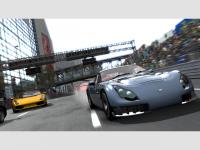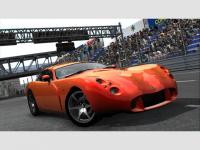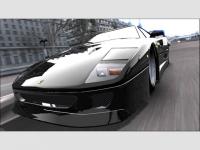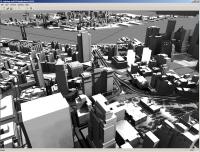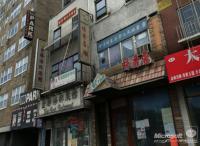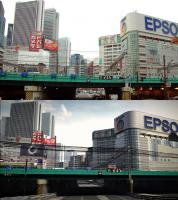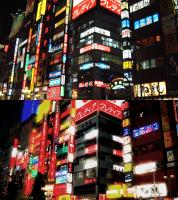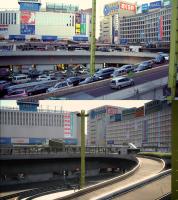Project Gotham Racing (Xbox 360)
Published by marco on
Project Gotham Racing 3 (Ars Technica) reviews the latest racing game from Bizarre Studios for the Xbox 360. The previous incarnations were known for their graphics. This one will be known for its photorealistic graphics. I’ve seen a couple of movies of the game in action and it is nothing short of breathtaking. Even when the action stops for a quarter of a beat as a Ferrari slews around in a 360º turn, the city backdrops are so perfect, you can’t tell you’re not watching a movie. The cars are perfectly rendered and the only giveaway is the complete lack of dirt and dust on them.
See? No more polygon look; no more clipping—just realistic environment mapping, specular highlighting and soft shadows. Even in action, like in the high-definition Project Gotham Racing 3 Movie (FileShack) or Project Gotham Racing 3 Summit 2005 Trailer movies, effects like motion blur and field of vision are used to create very cinematic gameplay.
The highly realistic environments are based, with an incredible attention to detail, on the cities of New York, London, Tokyo, San Francisco and Las Vegas (and possibly others—the home page for the game isn’t very forthcoming). The previous incarnation also had real-life cities (the same ones excluding Vegas), but screenshots from that game show good graphics, but the typically flat, overstretched, poorly stitched and blurred textures common in environments today. Good, but not photorealistic.
The realism in PGR3 is due to a painstaking level of detail both in the cars and environment—details that will never be noticed outside of a frozen screenshot, but that add that “little something” that make the graphics truly believable. In the head-on views of the cars above, you can see that the headlamp fixtures are all rendered in 3-D so that they look right from all the cool camera angles and don’t lift you out of the immersion. Similarly, the environments are wire-framed and built on architect’s tools, as seen in the map of San Francisco below (on the left). Textures, bump maps, and fine structure are added to produce screenshots like the facade in Chinatown (in the New York map) to the right, which take several seconds of study to distiguish from a photograph.
Now, realistic is one thing—that means it’s convincingly photorealistic. A fantastic accomplishment in and of itself. But are the environments actually real? That is, do the cities as rendered match up with reality? Awesome PGR3 vs Real Life Tokyo comparison pics (GAF) has a discussion of this topic and lots of screenshots with accompanying photographs of the same spot in the real city.
The three shots below have the photo and the screenshot juxtaposed on top of one another. They are all from Tokyo and it takes some examining to determine which one is the fake (hint … Japan has traffic :-). The results speak for themselves.
So it seems that one of the holy grails of video gaming has been achieved—photorealism in real-time is here today. Game companies are putting in the time and resources to make believable assets and real game worlds with accompanying physics. The X-Box 360, at least, is capable of presenting these graphics in all of their glory, especially when output as 1080i on a digital TV.
It’s enough to make you run right out and buy an X-Box 360, a digital TV and PGR3. Good thing for my wallet it’s not so easy to get an X-Box 360.
